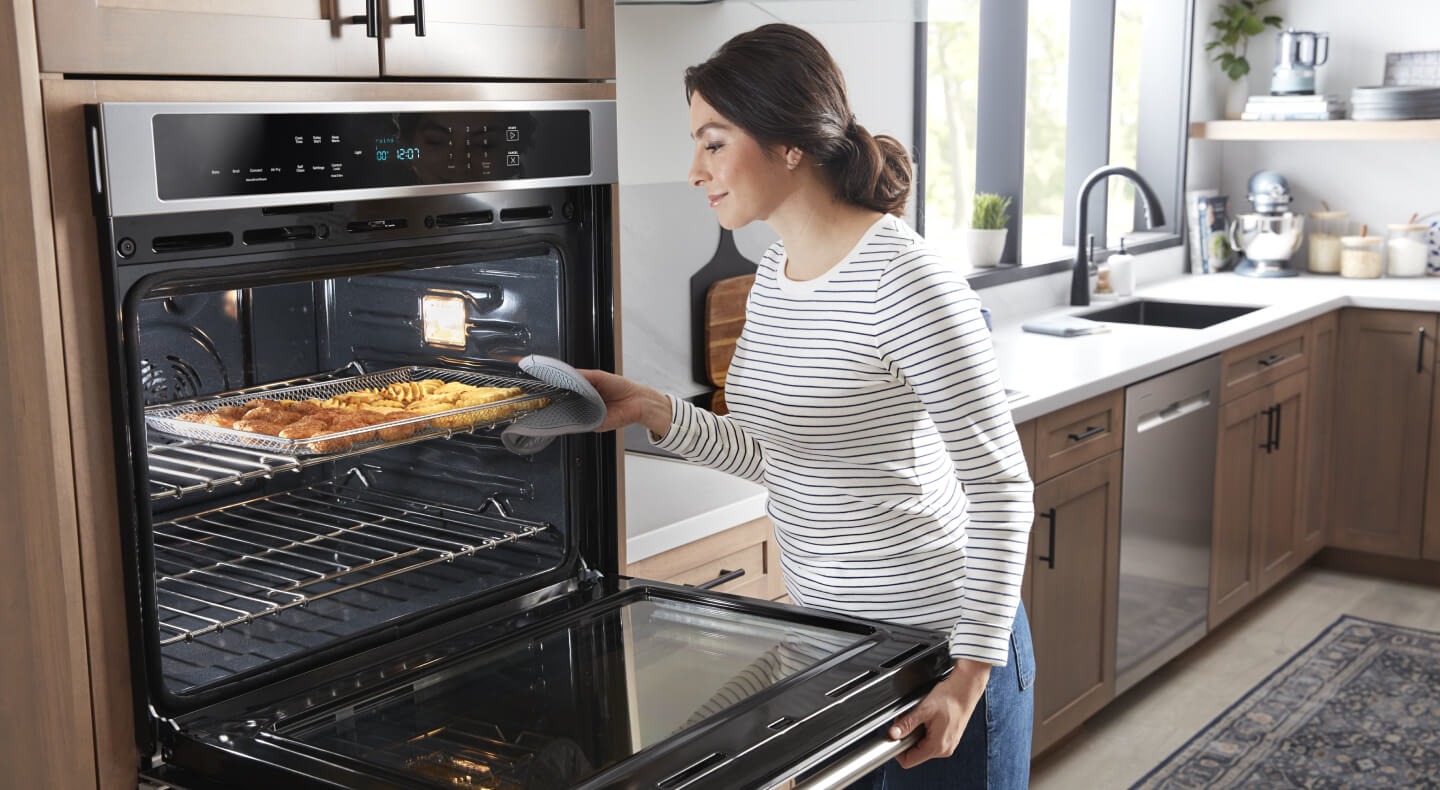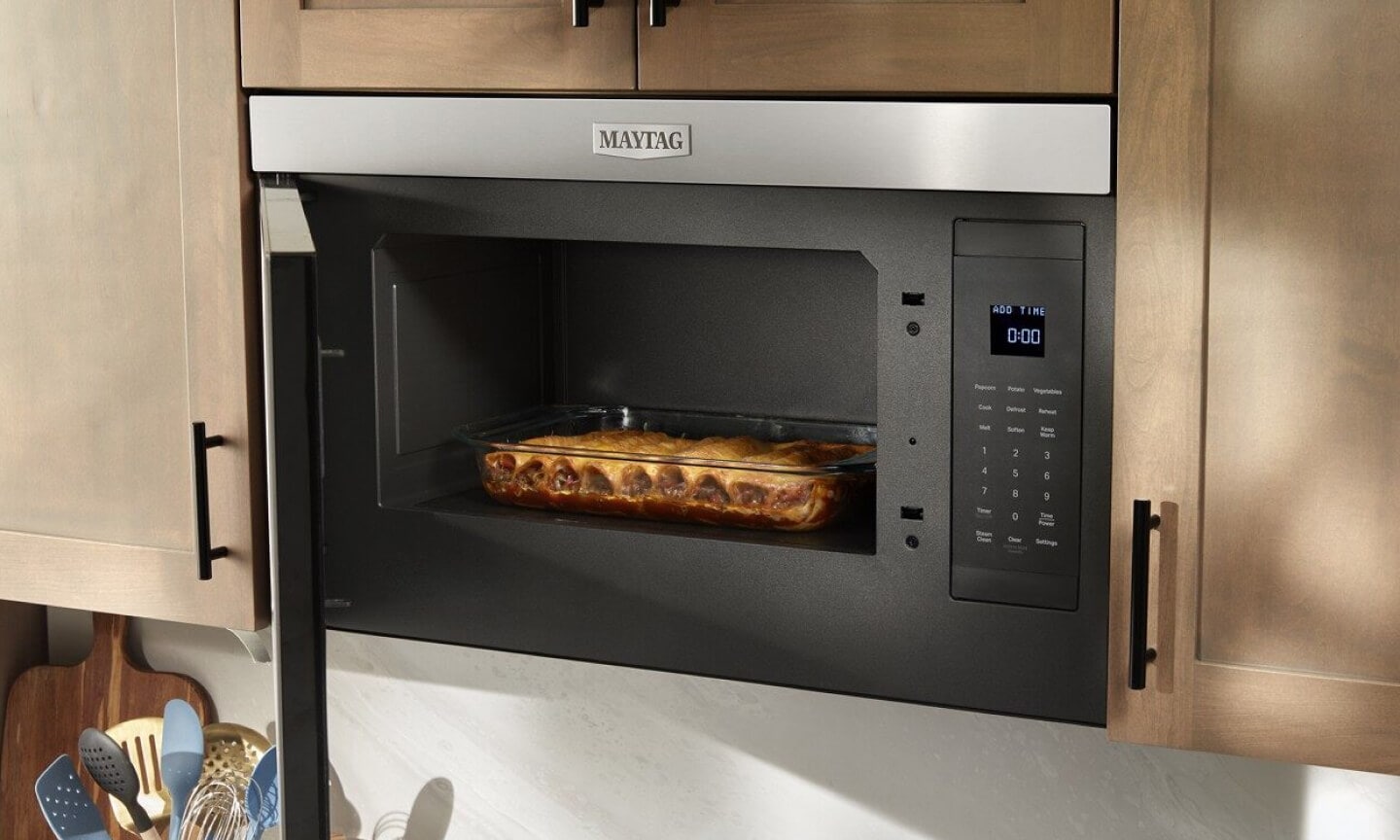
REHEATING LEFTOVERS: BEST WAYS TO REHEAT FOOD
When you have a busy day and cooking just isn’t an option, reheating leftovers is a simple approach to help you get dinner on the table. This guide will show you a few ways to reheat leftovers that can help you save time in the kitchen. Various foods require different reheating approaches for the most appetizing results. Read on to learn how to reheat leftovers quickly.
4 METHODS FOR REHEATING FOOD
When it comes to reheating food, there are a few options that can deliver different results. Whether you’re trying to revive a steak or reheat a few slices of pizza, there are various appliances that can get the job done, including your stove, microwave and air fryer.
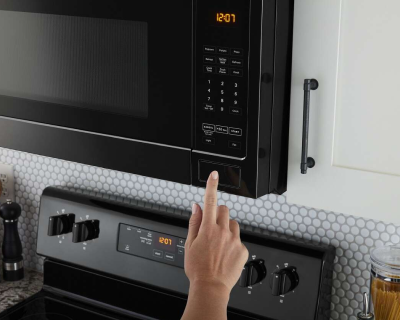
1. MICROWAVING LEFTOVERS
Reheating leftovers in the microwave is a quick solution when you’re pressed for time or don’t have a stove available. Foods that reheat well in a microwave include rice, pizza, fish, pasta and chicken.
- Use microwave-safe dishes or bowls and add liquid, if necessary.
Cover your food with a vented lid to allow steam to escape, which can help to reheat food evenly.
Microwaves can have cold spots that prevent your food from cooking evenly, so rotate your food and check internal temperatures with a food thermometer.
Denser food can require longer cooking times, so adjust cooking times accordingly. For example, a lasagna can take longer to reheat than a dish of vegetables.
Adjust power levels to complement the type of dish you are reheating. For example, soups and foods with higher water content may require a higher power level, while melting and defrosting items can require a lower power level to help avoid overcooking.
If available, use your microwave’s sensor cooking feature to help avoid cold spots and promote even cooking.
Check to see if your microwave has a reheat button, which can help to take some guesswork out of selecting the right setting.
SHOP MAYTAG® CONVECTION MICROWAVES
A Maytag® convection microwave is an excellent option when you want to reheat foods and get a crispy texture while avoiding soggy results. Convection microwaves generally have faster cooking times and allow for more even cooking across multiple racks so you can heat multiple dishes at once.
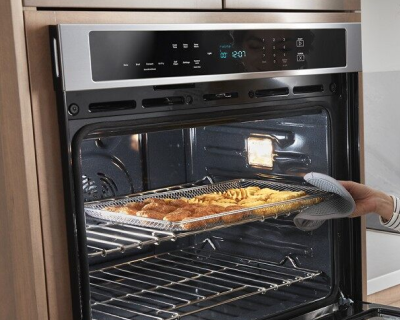
2. REHEATING FOOD IN OVENS
Oven reheating works well for pizza, fried chicken, one-pan dishes like casseroles and roasted vegetables. It may take a bit longer, but ovens can often offer crispy results without drying out your food.
Keep reading for tips on how to help keep your leftovers tasting nearly as juicy and tasty as the first time they were cooked.
- Consider the type of dish you want to reheat. Foods like meats or casseroles tend to reheat well in the oven, because they don’t typically dry out as much.
Generally, reheat dishes at a low temperature like 350°F so they don’t dry out.
Line a baking tray with aluminum foil and separate any pieces of food so they can cook evenly.
Cover your dish with foil and cook it between 8 and 20 minutes (depending on the food) until it is cooked through.
Your oven settings can make a difference. For example, an air fry setting can help revive the texture of crispier foods, such as fried chicken or French fries. A broil setting is another way to help prevent reheated foods from becoming soggy. Reheating steak in the oven at a low setting and moving it to a pan—also known as a reverse sear—helps retain its juiciness.
- Use the middle oven rack if you’re looking for a more basic heat, or use a rack closer to a heating source if you’re trying to attain a crispier texture.
SHOP MAYTAG® WALL OVENS
Maytag® wall ovens help you get dinner done quickly with features that deliver serious cooking power. Whether you’re looking for a single wall oven, double wall oven or a combination wall oven with a microwave, Maytag brand has an option that can help you get dinner to the table fast.
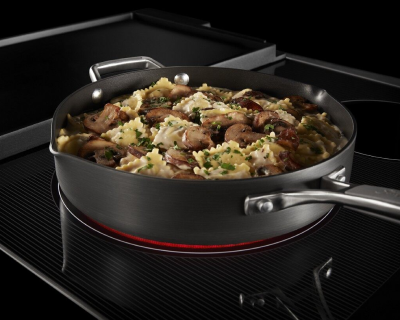
3. REHEATING LEFTOVERS ON A COOKTOP
Cooktops provide a straightforward method for reheating different types of dishes without having to heat up your entire range. Consider the following tips when using a stovetop to reheat your leftovers.
A nonstick pan is great for reheating fish, stir-fried vegetables and pizza. You can even use it to reheat steak.
You may need to add a bit of oil or water to achieve your desired results—whether you want your food to be crispy or you’re trying to revive food that has dried out a little in the fridge.
Reheating smaller pieces of meat vs. a single large piece can help prevent overcooking.
- Consider using a griddle for items that may need flipping—just be sure to avoid items with sauces that can leak off the sides.
SHOP MAYTAG® cooktops
Whether you’re looking for a more compact, 30-inch cooktop or a larger model with extra burners, Maytag brand has options for you. Choose among gas, electric or induction models that allow you to cook with both precision and speed. For example, select Maytag® cooktops, like this one, feature a Power Boost setting, designed to deliver maximum power so you can reach a boil 2x faster than traditional electric.1 Select models from Maytag brand also come with Temp Cook™ Induction Technology, which automatically adjusts heat to help keep temps steady, so your pancakes and grilled cheeses come out consistent—no matter how many you make.

4. REHEATING LEFTOVERS IN AN AIR FRYER
Use an air fryer when you want to reheat food such as pizza, fries or fried chicken. This convenient method uses little to no oil and gives your food a crispy exterior while retaining a tender interior, making the air fryer a healthier alternative to deep frying.
Air frying can also be a quick way to get leftovers reheated and on the table. Select Maytag® ranges feature No Preheat Air Fry, allowing you to enjoy crispy, golden results without the wait.
Here are some tips for reheating your leftovers in an air fryer.
Opt for foods that are crispy or flaky, like pizza, fried foods or even baked goods.
Avoid lightweight foods that may splatter or move because of the fan element or dishes with lots of liquid and creamy sauces, like soups, stews or casseroles.
Temperatures around 350 degrees Fahrenheit will typically do the trick for reheating.
Reheat your food for a few minutes, keeping a close eye on it. Keep in mind that denser foods may require some additional time. Cook time depends on the type and size of the food.

Maytag® kitchen ranges
POWERFUL COOKING FEATURES THAT WORK, MEAL AFTER MEAL
Maytag® ranges offer powerful cooking features and next-level cleanability to help make mealtime less of a chore
SHOP MAYTAG® RANGES WITH AIR FRY
Select Maytag® ranges come with air fry settings so you can enjoy the delicious results of an air fryer with all the benefits of a full-sized oven. Some models from Maytag brand even feature a No Preheat Air Fry option, which eliminates the preheat process and cooks fried foods fast—delivering a crispy-on-the-outside, juicy-on-the-inside taste using little to no additional oil.2
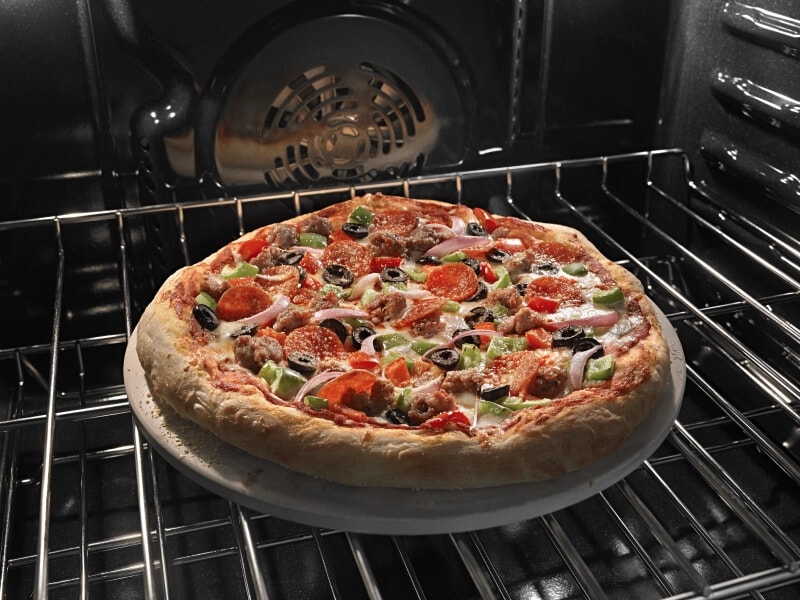
TEMPERATURE FOR REHEATING FOOD
Generally, you want your leftovers to reach 165°F on a food thermometer, according to leftover reheating guidance by the U.S. Department of Agriculture. Heating leftovers to this temperature can help prevent foodborne illness.
Here are additional temperature considerations to note when reheating food:
- Covering your leftovers when reheating can help food retain moisture and cook all the way through.
- Only reheat food that has been properly stored in a refrigerator or freezer.
Bring reheated liquids like sauces, soups and gravies to a rolling boil.
If reheating in a microwave, arrange food evenly in a microwave-safe dish with a microwave-safe cover and rotate the dish partway through cooking to promote even heating. Vent the lid or wrapping to let out steam.
Use a thermometer to check the internal temperature of your dish.
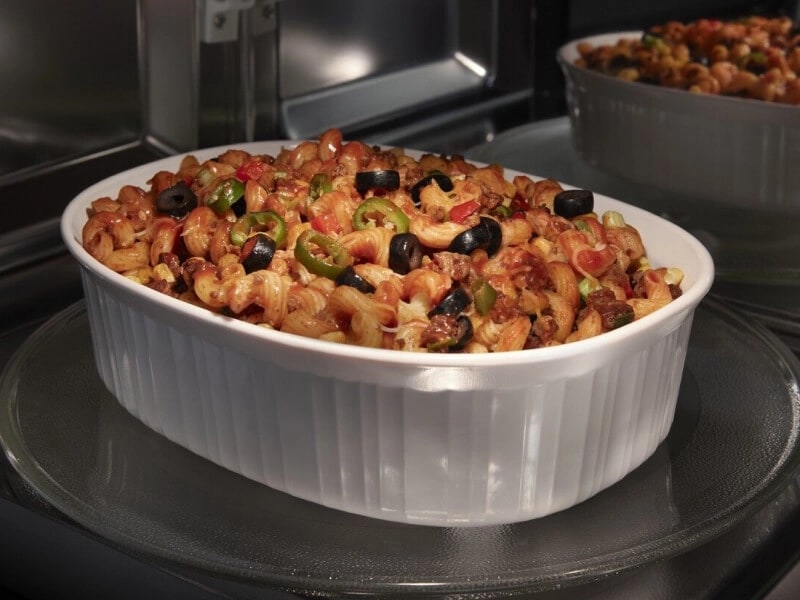
CAN YOU REHEAT LEFTOVERS TWICE?
You can reheat leftovers repeatedly. Reheat the dish to 165°F and refrigerate any unused portions within two hours if you still plan to enjoy it later. If you don’t plan on eating your leftovers within four days, the food should be immediately placed in the freezer.
It’s important to consider that the quality of your food can decrease with each reheat. Repeated reheating and storage can also affect foods’ nutritional value, as well as its taste and texture.
TIPS FOR REHEATING LEFTOVERS
Check out the list of tips below to help maintain freshness and help to achieve even temperatures when reheating leftovers.
- Properly defrost your frozen leftovers either by using your defrost setting on your microwave or by letting them defrost slowly, in the refrigerator. Store food properly, refrigerating leftovers and eating them within three to four days.
You can freeze leftovers for three to four months.
Stir food to help ensure even heating. Your reheated leftovers should reach and maintain 165°F for two minutes.
Keep food out of the danger zone (40°F-140°F).
Store and cool leftovers within two hours in the refrigerator. Eat food within three to four days.
Do not refreeze leftovers that have already been defrosted.
Immediately serve reheated leftovers.
EXPLORE MAYTAG® KITCHEN APPLIANCES
Preparing daily meals can be challenging, but you can still eat well and enjoy your leftovers with reliable appliances that do the work for you. Enjoy features on select models of Maytag® microwaves, cooktops and ranges, such as air fry for golden results and convection mode to help heat up all your favorites.
Was this article helpful? Pass it on
EXPLORE MORE FROM MAYTAG BRAND
1. Compared to MEC8836HS.
2. Compared to traditional deep frying.

